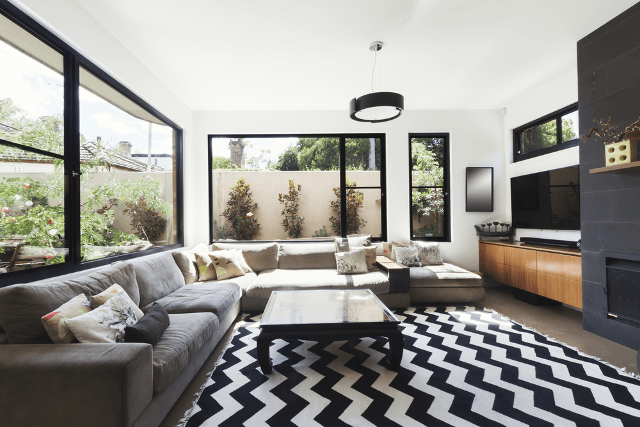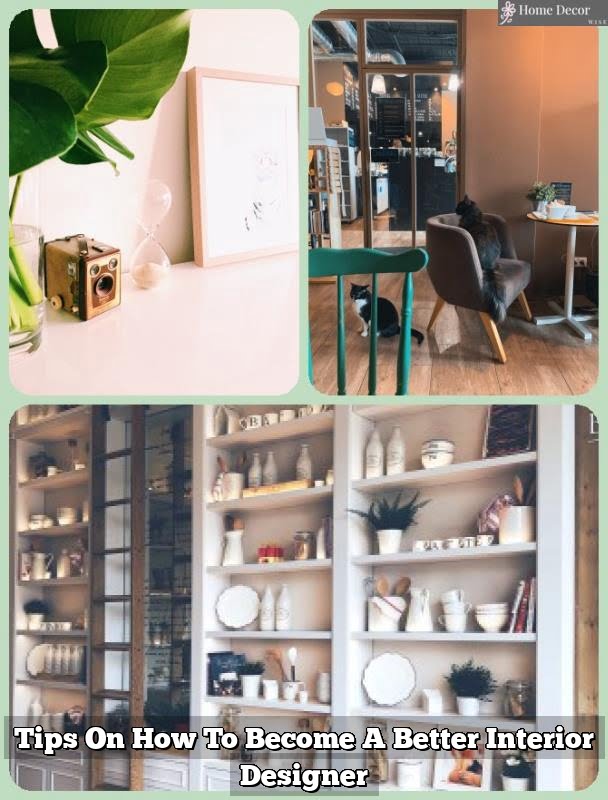Are you passionate about design and interested in creating beautiful and functional home decor products? If so, you may be considering a career as a home decor product designer.
In this article, we will explore the exciting world of home decor product design, outlining the necessary steps to become successful in this field. From obtaining the right education and building a standout portfolio to networking within the industry and finding employment opportunities, we will provide valuable insights into pursuing a career as a home decor product designer.
Home decor product design involves creating a wide range of items that are used to enhance and beautify interior spaces, such as furniture, lighting fixtures, textiles, ceramics, and more. This field offers endless opportunities for creative expression and innovation, making it an enticing career choice for individuals with a passion for design.
As we delve into the various aspects of becoming a home decor product designer, you will discover the essential skills and knowledge required to excel in this dynamic industry.
In addition to offering an overview of home decor product design, we will also discuss the significance of continuous learning and growth in this field. By staying up-to-date with the latest trends and styles while establishing your personal brand through effective marketing strategies, you can set yourself up for success as a home decor product designer.
So if you’re ready to embark on an exciting journey in the world of design, keep reading to learn how to become a home decor product designer.
Education and Training
For those interested in pursuing a career as a home decor product designer, obtaining the right education and training is crucial. A bachelors degree in a related field such as interior design, industrial design, or product design is often required by employers.
This type of education provides aspiring designers with the foundational knowledge and skills needed to succeed in the industry. Courses in color theory, spatial planning, furniture design, and materials science can all play a vital role in preparing individuals for a career in home decor product design.
In addition to formal education, it’s important for aspiring designers to develop certain skills that are essential for success in the field. These include proficiency in design software such as CAD or Adobe Creative Suite, strong attention to detail, and an understanding of current trends in interior design. It’s also beneficial to have a good eye for aesthetics and a creative mindset.
Internship and apprenticeship opportunities can provide valuable real-world experience and mentorship from established professionals in the field. These opportunities allow budding designers to learn about the practical aspects of designing home decor products while also making industry connections.
Overall, obtaining the right education, developing key skills, and gaining practical experience through internships are essential steps towards becoming a successful home decor product designer. Understanding the importance of these aspects is fundamental for anyone wondering how to become a home decor product designer.
Building a Portfolio
As a home decor product designer, building a portfolio is essential to showcase your skills and creativity to potential clients and employers. Your portfolio serves as a visual resume, providing insight into your design style, technical abilities, and overall artistic vision. In this section, we will explore the importance of creating a standout portfolio and discuss the key elements that should be included in order to successfully market yourself as a home decor product designer.
Creating a Standout Portfolio
Your portfolio should effectively communicate your design capabilities and unique aesthetic. Whether you specialize in furniture design, textile prints, or decorative accessories, it is crucial to curate a collection of your best work. Quality over quantity is key when selecting pieces to include in your portfolio. Choose projects that highlight your creative process, attention to detail, and ability to solve design challenges.
Diverse Showcase of Skills
A diverse portfolio that showcases various styles and techniques not only demonstrates your versatility as a designer but also broadens your appeal to potential clients with different tastes and preferences. Incorporating a range of projects such as modern, traditional, minimalist, or eclectic designs will demonstrate your adaptability and grasp of different design aesthetics.
Digital Presentation
In today’s digital age, having an online portfolio is crucial for reaching a wider audience and making your work easily accessible to potential clients. Utilizing platforms such as Behance or creating a personal website allows you to present high-quality images of your designs accompanied by detailed descriptions and insights into your creative process.
By following these guidelines for building an impressive portfolio, you can effectively showcase your talent and attract opportunities within the competitive field of home decor product design.
Networking and Industry Connections
Networking within the home decor product design industry is crucial for establishing connections with professionals and potential clients. By attending industry events, trade shows, and joining professional organizations, designers can connect with others in the field and learn from their experiences. Building these connections can lead to opportunities for collaboration, mentorship, and even job offers.
Creating a strong network within the design industry involves actively engaging with other professionals, sharing your work on social media platforms, and participating in discussions about design trends and techniques. By establishing yourself as a knowledgeable and talented designer within the community, you can attract the attention of potential clients and employers.
In addition to attending events and using online platforms to connect with others, it is important to maintain professional relationships by following up with contacts regularly. This can be done through email or social media messages to express interest in collaborating or simply to stay connected. Building a network of trusted colleagues and industry connections can open doors to new opportunities throughout your career as a home decor product designer.
| Networking Tips | Industry Events | Online Platforms |
|---|---|---|
| Engage actively with professionals | Attend trade shows and design events | Showcase work on social media platforms |
| Maintain professional relationships | Connect with colleagues in the field | Follow up with contacts regularly |
Understanding Trends and Styles
When it comes to becoming a successful home decor product designer, understanding the latest trends and styles is essential. Keeping up with the ever-changing landscape of interior design is crucial for staying relevant in the industry. Here are a few tips on how to stay ahead of the curve and incorporate various styles into your designs:
- Research Trend Forecasting: Stay updated with trend forecasting reports and publications to gain insight into upcoming color palettes, patterns, and design aesthetics. Understanding what’s on the horizon will help you anticipate the needs and preferences of future clients.
- Embrace Versatility: As a home decor product designer, it’s important to be versatile in your approach. Experiment with different design styles such as minimalism, bohemian, traditional, or contemporary to expand your skill set and cater to a diverse range of clients.
- Stay Open-Minded: Design trends are ever-evolving, so it’s important to remain open-minded and adaptable in your creative process. Be receptive to new ideas and be willing to incorporate fresh concepts into your designs.
By staying attuned to current trends and embracing various styles, you can ensure that your work remains relevant and appealing in today’s competitive home decor product design market.
Remember that understanding trends and styles is an ongoing process that requires continuous learning and exploration within the design field. By remaining dedicated to researching current trends, embracing versatility, and remaining open-minded in your creative process, you can establish yourself as a successful home decor product designer.
Marketing and Branding Yourself
As a home decor product designer, effectively marketing and branding yourself is essential for success in the industry. Establishing a personal brand is an important step in showcasing your unique style and design aesthetic to potential clients and employers. Utilizing social media platforms such as Instagram, Pinterest, and LinkedIn can help you showcase your work, connect with other professionals in the industry, and attract potential clients.
Here are some ways to effectively market and brand yourself as a home decor product designer:
- Create a professional website or online portfolio to showcase your work
- Utilize social media platforms to share your designs and connect with potential clients
- Network with other professionals in the design industry to establish connections and gain exposure
- Consider creating a blog or YouTube channel to share insights about your design process and expertise
Additionally, it is important to develop a strong personal brand that reflects your unique design style. Whether you specialize in minimalist Scandinavian design or vibrant bohemian interiors, it is crucial to convey a consistent image that resonates with your target audience.
By effectively marketing and branding yourself as a home decor product designer, you can attract potential clients, build a strong reputation within the industry, and create opportunities for career growth. It is important to be authentic in your branding efforts while also staying true to your individual design style.
Finding Employment Opportunities
After completing your education and building a solid portfolio, the next step in becoming a home decor product designer is to find employment opportunities within the industry. There are various career paths available for individuals with a passion for design, including working for a design firm, starting your own business, or pursuing freelance work.
One of the most important aspects of finding employment opportunities in this field is networking and establishing connections within the industry. Whether it’s attending design events and trade shows, joining professional organizations, or reaching out to industry professionals through social media platforms, building a strong network can open doors to potential job opportunities and collaborations.
Additionally, actively searching for job openings and freelance projects is crucial in securing employment as a home decor product designer. This may involve regularly checking online job boards, reaching out to design firms or companies directly, and creating an impressive presence on platforms like LinkedIn or design-specific websites.
It’s essential to keep an open mind when exploring employment opportunities within the home decor product design industry. There is a wide range of roles available including industrial designer at a furniture company, concept artist for a home goods brand, trend analyst for a design publication, among others. By being open to different career paths and remaining persistent in your job search efforts, you can find fulfilling opportunities that align with your goals as a designer.
| Job Search Tips | Contact Information |
|---|---|
| Regularly check online job boards | Design firms or companies directly |
| Attend design events and trade shows | Social media platforms |
| Create an impressive presence on LinkedIn | Design-specific websites |
Embracing Continuous Learning and Growth
To become a successful home decor product designer, it is essential to embrace continuous learning and growth in the design field. This dynamic and ever-evolving industry requires designers to stay updated on the latest trends, techniques, and technological advancements. Continuous learning not only allows designers to expand their knowledge and skillset but also keeps them inspired and motivated in their career.
One of the ways to embrace continuous learning is by enrolling in workshops, courses, or attending design conferences and trade shows. These opportunities provide valuable insights into new materials, technologies, and design concepts that can enhance a designer’s creativity and innovation. Additionally, networking at such events allows designers to connect with industry professionals and potential clients, opening doors for collaboration and career opportunities.
Another important aspect of embracing continuous learning is staying informed about market trends and consumer preferences. Understanding the evolving styles in home decor product design is crucial for staying relevant in the industry. Designers should regularly research and analyze current trends, as well as anticipate future developments to ensure their designs resonate with target audiences.
Furthermore, seeking feedback from peers, mentors, or potential clients can contribute to ongoing growth as a home decor product designer. Constructive criticism provides valuable insights that can help refine one’s skills and approach to design.
It is also important for designers to remain open-minded and adaptable in their creative process, as this flexibility fosters continuous improvement and growth in their work. With dedication to lifelong learning, passion for design, and a proactive approach towards personal development, aspiring designers can pave the way for a successful career in home decor product design.
Conclusion
In conclusion, becoming a successful home decor product designer requires dedication, hard work, and a passion for design. By obtaining the necessary education and training, building a standout portfolio, networking within the industry, understanding trends and styles, marketing yourself effectively, finding employment opportunities, and embracing continuous learning and growth, individuals can pave their way to a fulfilling career in home decor product design.
It is crucial to obtain a bachelor’s degree in a related field and acquire the skills and knowledge needed for success in the industry. Internship and apprenticeship opportunities provide valuable hands-on experience. Building a diverse portfolio that showcases various styles and techniques is essential for demonstrating creativity and expertise. Networking with industry professionals, attending design events and trade shows, and establishing an online presence are vital for creating connections within the industry.
Staying inspired, motivated, and adaptable in the constantly evolving field of home decor product design is key to long-term success. Embracing continuous learning through workshops, courses, and staying up-to-date with the latest trends ensures that designers remain competitive in the marketplace. By following these steps and staying dedicated to their craft, individuals can turn their passion for design into a rewarding career as a home decor product designer.
Frequently Asked Questions
What Qualifications Do You Need to Become a Product Designer?
To become a product designer, you typically need a bachelor’s degree in industrial design, engineering, or a related field. Some employers may also require a master’s degree for more advanced roles. In addition to formal education, having strong artistic and technical skills is essential in this field.
Can I Do Product Design Without a Degree?
While having a degree in product design or a related field is beneficial and often preferred by employers, it is possible to work as a product designer without one. Building a strong portfolio that showcases your skills and creative abilities is key to proving your capabilities to potential employers.
Additionally, gaining experience through internships or freelance work can also help compensate for the lack of a degree.
How Do I Start Working as a Product Designer?
Starting your career as a product designer usually begins with obtaining the necessary education and skills through formal training or self-study. Building a strong portfolio that highlights your design projects and creativity is crucial when applying for entry-level positions.
Networking within the industry can also open doors for job opportunities and mentorship from experienced professionals. Internships and freelance work are other pathways to gain relevant experience and start working as a product designer.

I’m thrilled to be your companion on this exciting journey through the world of home decor and design. With a passion for turning houses into homes and a keen eye for the finer details, I’m here to help you transform your living spaces into beautiful, functional, and meaningful havens.





